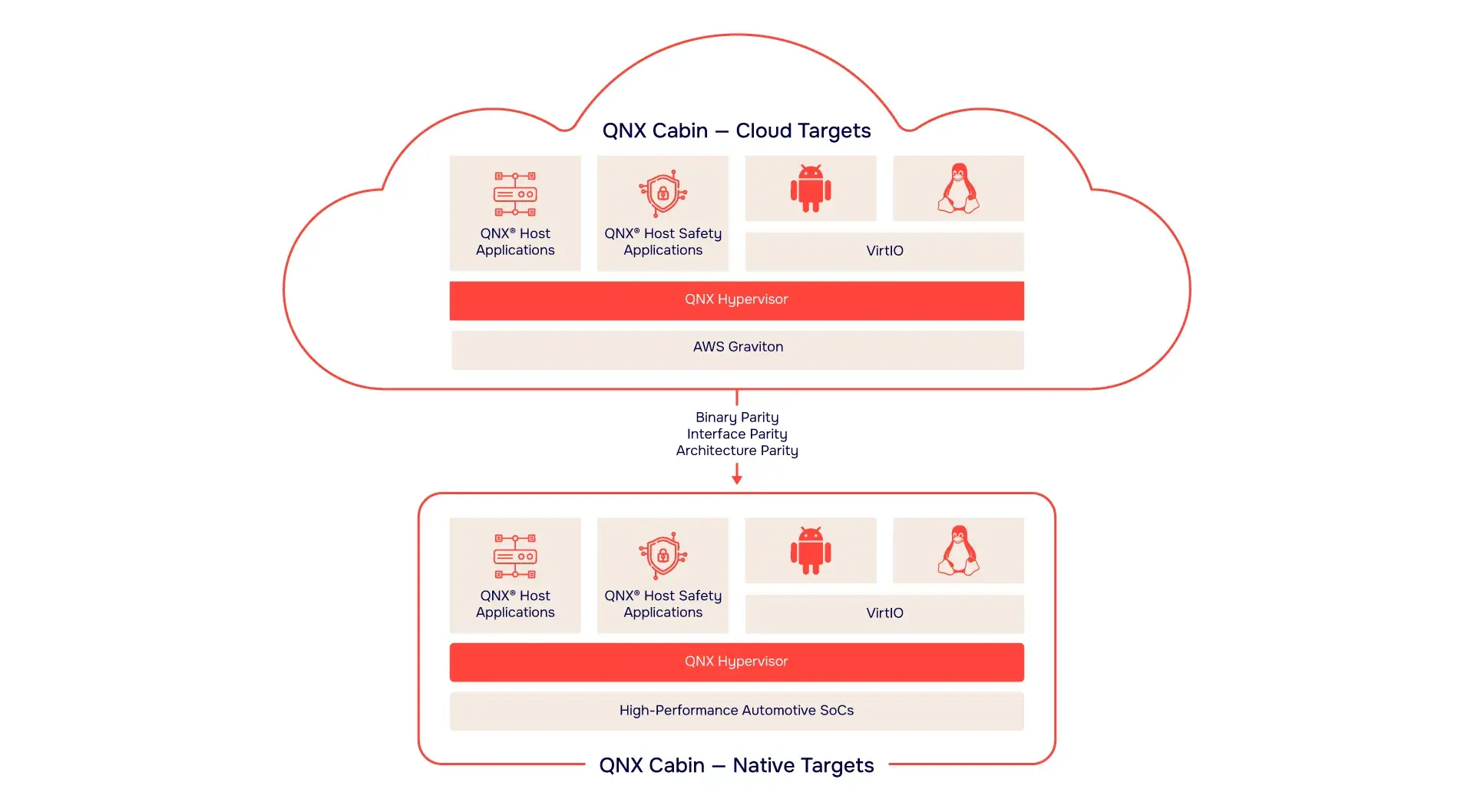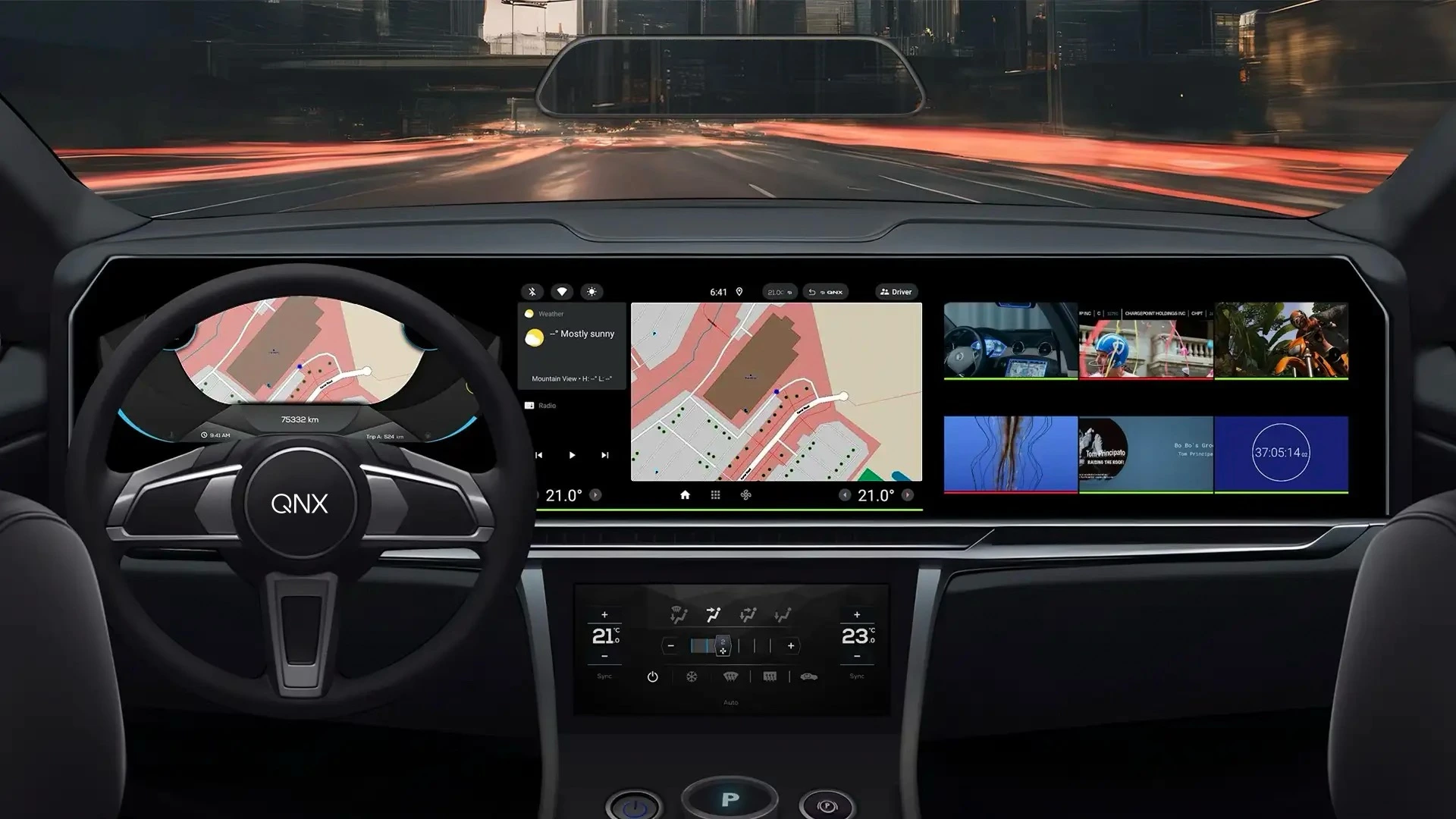Building the Total In-Cabin Experience
A Safe and Secure Foundation to Accelerate Digital Cockpit Development
Virtualizing the Digital Cockpit to Reduce Complexity
Comprehensive Tools for Building Digital Cockpits

Empowering Automotive Development Teams to Innovate
Delivering Differentiated Customer Experiences
Learn more about QNX Cabin
With our virtual cockpit, we’re revolutionizing not just our approach, but also that of our suppliers and partners in the industry. Essentially, we’re able to get closer to our customer’s needs through this technology with faster development cycles, faster feedback loops, and quicker delivery of the technology they use and love. It’s a leap towards customer-first innovation and efficiency in the automotive world.
Chief Software Officer, Stellantis.
Software virtualization and abstraction in the cloud is vital to accelerating development and maintaining feature delivery on pace with consumer demand.
Automotive and Manufacturing Executive, AWS.
Related Products and Services




QNX Cabin FAQ
What is QNX Cabin?
QNX Cabin is a pre-integrated digital cockpit software reference that serves as a development framework for designing and developing digital cockpit systems. Based on QNX products such as the QNX Hypervisor, QNX Advanced Virtualization Frameworks, QNX Screen, and QNX Acoustics Management Platform, QNX Cabin offers an environment to easily run and integrate Linux and/or Android Automotive operating systems for infotainment alongside safety-based QNX applications. It also supports acoustic designs without the need for a DSP, though DSP options exist.
What is the difference between QNX Cabin for Cloud and QNX Cabin for SoC?
QNX Cabin for Cloud and QNX Cabin for SoC are the same platform aimed at different development environments. You can start with cloud-based development if desired or advantageous, followed by an easy port to industry-leading SoCs for runtime.
How does QNX Cabin allow me to scale my cockpit development effort?
Cloud-based development with QNX Cabin means there is no need for SoC test benches until later in the process. Engineers around the world can collaborate on development, debugging, and testing prior to release onto the target hardware.
How does QNX Cabin reduce my dependence on specific SoCs?
QNX Cabin allows you to develop in the cloud first and then either port directly or with minimal effort onto industry-leading SoCs, reducing dependence on specific SoCs.
Does QNX Cabin support multiple releases or updates of guest operating systems?
Yes, QNX Cabin supports multiple releases or updates of guest operating systems via VirtIO and abstraction from the OS layer.
How does QNX Cabin benefit OEMs?
QNX Cabin simplifies the development of digital cockpit features such as instrument clusters, audio, critical safety ADAS, and driver information displays. It ensures a smooth, cohesive end-user experience while reducing development complexity and time-to-market.
How does QNX Cabin handle mixed-criticality environments?
QNX Cabin blends mission-critical features running on the safety-certified QNX Operating System (OS) with less critical features running on guest operating systems like Android Automotive and Linux. Abstraction layers such as VirtIO ensure OS integration reuse across different SoCs, enhancing the in-cabin experience and reducing development complexity.
How does QNX Cabin support cloud-based development?
QNX Cabin enables hardware-portable design and development of digital cockpits in the cloud, allowing for easy portability between SoC targets, collaboration across geographical regions, and scalability using cloud resources. This increases development flexibility and reduces time-to-market.





